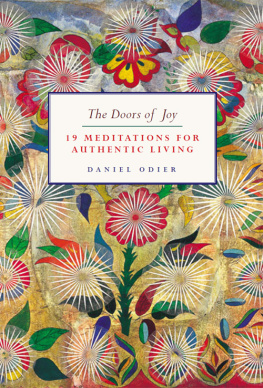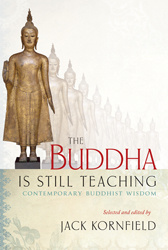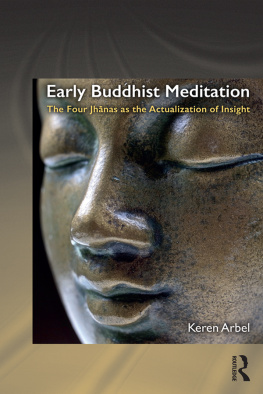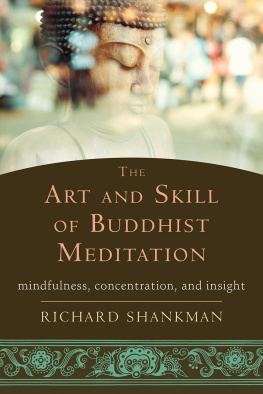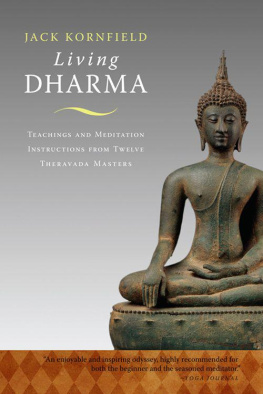In limiting this work to the contemplative techniques of Buddhism and Taoism, I intend to go directly to the essential and leave aside everything that does not have a direct relationship with the Way that leads to Nirvana and to the Tao.
Most books dedicated to Buddhism single out a particular school. They then expose the doctrines in detail, often stopping before treating the essential: the different techniques of meditation.
In the course of my many trips to the Orient, in the monasteries of each school, I strove to understand and to live what the books rarely describe in detail for the good reason that Orientalists often prefer philosophical studies to direct experience.
In order to restore the essence of this experience, I have chosen to treat this subject with the greatest scrutiny and clarity possible, while at the same time preserving the integrity of my research.
The whole interest of a direct physical experience is that it allows the setting aside of books and teachings in order to encounter men or sages who are the realization of a complete doctrine and whose presence is irreplaceable. This alone can open a mind burdened with knowledge to the realization of the void.
To meet a master, a man who says everything by his simple presence, is to open oneself to an intense and profound upheaval that passes like a tidal wave over all the ideas that one might make of a doctrine.
PART I
*
BUDDHISM

Buddha, guardian of the entrance to Swayambunath, one of the great places of pilgrimage in Nepal


His skull will show a protrusion. His hair braided over the right shoulder will be azure. On his wide, smooth forehead between His eyebrows there will be a small, raised circle of silver hairs. His eyes, shaded by long eyelashes like those of a heifer, will be large, white and black. His ear lobes will be three times longer than normal. He will have forty solid identical teeth, which will shelter a long and slim tongue, giving him an excellent sense of taste. His jaw will have the strength of a lion's. Along with a fine, golden-colored skin, He will have a limber and firm body like the stalk of the arum, a large chest like the breast of a bull, round shoulders, solid thighs, gazelle legs and seven well-distributed protruding contours. His hands will be large. His arms, hanging, will touch his knees. His extremely long fingers and toes will be joined by a thin membrane. His hair will grow strand by strand, and the hair on His arms will grow upward. What needs to be hidden will remain so. His heels will be thick, and His palms will be united. Under each of His feet a thousand-spoked wheel will be traced, and He will stand perfectly upright on symmetrically equal feet And His speech will have the sound of that of Brahma.
CHAPTER ONE

THE LIVES OF THE BUDDHA
Some definite statements can be made concerning the life of the Buddha through careful research, in-depth study, comparison of original texts, and information obtained from archaeological research.
The Buddha was born in 556 B.C. in a small village of Nepal in the region of Tirai, Kapilavastu. He belonged to a tribe named Shakya of which his father was king. There is no information that tells us whether Buddha was an Aryan or of the yellow race. When he was about twenty-seven years old, he left Kapilavastu and became a wandering ascetic. Near the hamlet of Uruvela, in India, about a hundred kilometers from Patna, he entered a cave and practiced an extremely rigorous meditative asceticism. When he was about thirty-seven years old, he achieved Illumination and left for Benares, where he found five ascetics who became his first disciples. There he gave his first sermon, in which he exposed the Four Truths and the Way of Deliverance, the Noble Way of the Eight Paths. Buddha continued to spread his teaching to an increasing number of disciples and founded the Sangha, the congregation of monks. In the area of Patna, rich lay people allowed through their donations the development of several centers where Buddha and his disciples lived during the period of the monsoons, which made travel impossible. After a life of teaching, Buddha died at the age of eighty-one following a sickness or poisoning. The teachings of the Buddha were transmitted orally for about 400 years before being written down with commentaries in the course of the following centuries.
THE LEGENDARY LIFE
Although the lives of the great initiators of humanity were more internal than external, their disciples were able to give a fairly accurate account of their teachings. However, their imagination had to compensate for the unknown details of the masters' lives.
Buddha did not escape from this any more than jesus did. Everything begins with a virginal birth and culminates by a promise of a future return.
Maya-Devi, pure and radiant, marries King Shuddhodana, after a foreboding dream and a series of miraculous omens, and finds herself transported by the gods to the top of the Himalayas, where a tree shoots forth. Led into a golden palace by celestial attendants, Maya-Devi sees a yellow elephant possessing six tusks of ivory and a rosy head. After offering to the queen a lotus that he holds in his trunk, the miraculous animal stabs one of his tusks into the right side of the queen, who feels nothing.
Ten months later, the queen, hidden by a thicket of leaves, lies down at the foot of a fig tree. Instantaneously the soil is covered with thick grass from which ten thousand lotuses spring forth. Without her experiencing the least pain, the Buddha emerges from her right side. A giant lotus provides a bed for him. The Buddha rises, takes seven steps toward the north, south, east and west and takes possession of the world. He announces his last incarnation and says that he will free man from suffering brought on by birth, old age and death. As soon as the infant finishes speaking, he becomes similar to others.
Soon the young Prince Siddhartha amazes teachers and sages with the extent of his knowledge. No one is equal to him in athletics, such as horseback riding and archery. Still, the young Prince spends long hours in the marvelous gardens of the palace where, near ponds covered with lotuses, he falls into delicious contemplations. One day Siddhartha goes into the fields with his father, who has him admire the thick furrows of earth raised by the plow. The young Prince sees the beauty of the spectacle, but he also sees the suffering of the buffalo, the hardship of the laborer and the death of the worms cut by the plowshare. He sees in nature that the struggle for life means the law of the survival of the fittest. His love for each breath of life is so strong that he asks his father if he can remain where he is in order to meditate. In spite of the movement of the sun, the shadow of the tree that shelters him does not move, and Siddhartha knows his first ecstasy.


